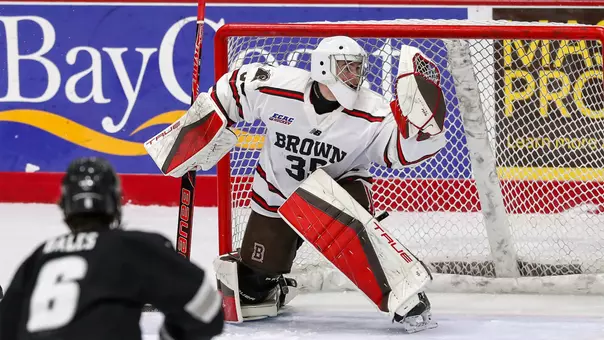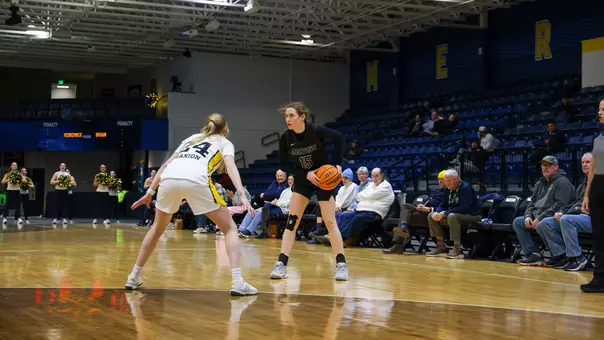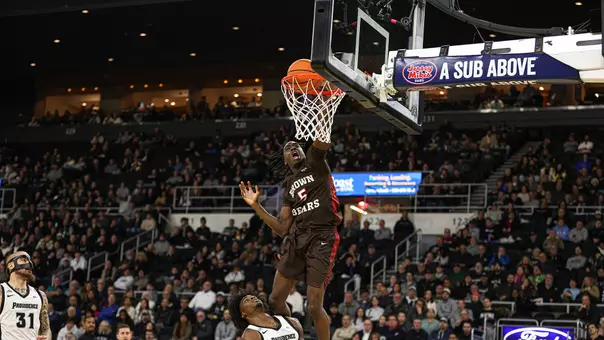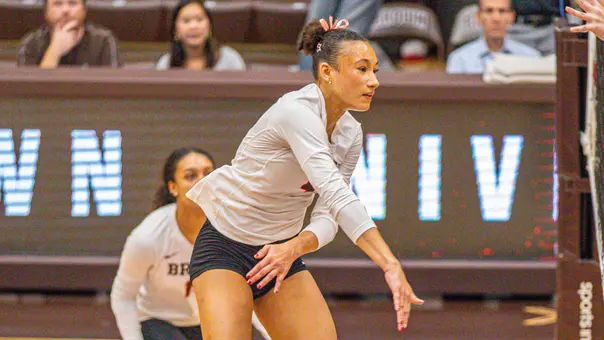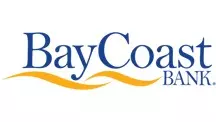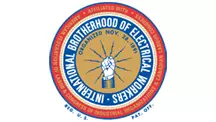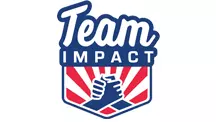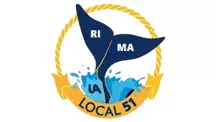Hall of Fame
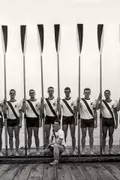
- Induction:
- 2024
In the annals of Brown athletics, coach “Whitey” Helander and the 1960 “Cinderella” Men’s Crew stand alone in overcoming seemingly insurmountable odds. Rising to the pinnacle of their sport with an unpaid volunteer coach, no University funding, no Brown boathouse, and no history against the established powers of the rowing world, this Club Team of unrecruited oarsmen magically stood the rowing world on its head with its performance in the Intercollegiate Rowing Association’s 58th Annual Regatta in Syracuse.
The story begins in March of 1959 when two Brown rowers encountered a former Syracuse rower at a RISD party. Whitey Helander, a Marine pilot, was pursuing a RISD degree in industrial design, and the conversation turned to the plight of the Brown club team - no coach. The students invited Whitey down to the Seekonk, and he became hooked.
Whitey took charge immediately, laying down strict rules such as no smoking and running to practice. His tough-love approach stressed conditioning through long, grueling practices on the Seekonk and Narragansett Bay. The crew responded to Whitey’s challenges by melding into a close-knit unit - a bond that has lasted a lifetime. As the Dartmouth coach observed, “They have a togetherness that is a little short of unbelievable.” This group of unique, fun-loving college students, each with a colorful nickname, possessed a unity of purpose, which enabled them to overcome every conceivable roadblock. Their unshakable bond was based on mutual respect and love, sprinkled with good humor.
As the spring season evolved, the crew swept aside their small-college opponents and, against Ivy rival Dartmouth in Hanover, captured the Atalanta Cup with a record-breaking performance. The influential Brown eight then captured its second consecutive Dad Vail Regatta, representing the minor college national championship. They then received an invitation to the IRA to race for a national title. The confident Bruins, who averaged six feet four inches and one hundred eighty-eight pounds per man, were not intimidated by competing in the iconic three-mile race for the first time. The press dismissed them as “not knowing any better” and picked them last of the 12 competing crews. To add insult to injury, Whitey was unable to be with them because of a commitment to marine reserve duty. The Regatta Committee, fearing that an uncoached crew on an unfamiliar course “might hurt somebody,” recruited the Navy lightweight coach to oversee Brown’s Orphans of the Seekonk.”
On race day, thousands of stunned spectators witnessed what one sportswriter called “one of rowing’s greatest stories of the last decade, maybe even the entire history of the vintage IRA.” The Brown Eight contained only one senior, Captain Barry Burns ’60. Stroked by Bill Engeman’61 and guided by Cox Dick “Mouse” MacKenzie ’61, the Bruins rowed a nearly perfect race, staying with the pack for the first mile, then moving up, passing boat after boat, causing race announcer Red Parton to report: “I do not believe it. I do not believe it.” With three-quarters of a mile to go, Brown was second and closing fast on the leader Washington when suddenly the Husky’s boat veered across three lanes, forcing Brown to take evasive action to prevent their shell from crashing into the rocky shore. Unable to make their final sprint, the Brown crew ended their race at the chaotic finish line. The judges awarded them fourth place and offered the opportunity to lodge a protest, which the flummoxed rowers declined. For 60-plus years, they have been left to wonder, what if?
The national publicity surrounding the Cinderellas offered some consolation. “Cal won the Regatta - Brown stole the show, “proclaimed The New York Herald Tribune. The Brown Daily Herald published a special edition on the Cinderellas. Then, finally, after 12 years as a Club Sport, Brown Crew was recognized as a Varsity sport by the Brown Administration in the fall of 1960. John “Bottle “ Escher’s ’61 long meeting with Brown President Keeney was pivotal to securing the recognition victory. In addition, Brown’s strong showing in the July Olympic Trials helped convince the authorities that Brown Men’s Crew had finally arrived.
More than six decades after Brown’s incredible 1960 season, these rowers are back on campus. They have always been staunch supporters of Brown Crew, and their legacy is seen in the success that Brown Men’s and Women’s Crews have enjoyed since the sport was fully recognized: all Brown rowers stand on the shoulders of the 1960 Cinderella Crew. Tonight, Whitey and his “gang,” as they call themselves, are crossing the ultimate Brown athletic finish line, induction into the Brown Athletic Hall of Fame.
1960 Cinderella Crew Team
Coach - Gordon E. “Whitey” Helander
Manager - John Tasker ’61
Team - Edward J. Ashley ’62, Marsh M. Bassick ’61, George N. Baum ’62, Jay B. Burns ’60, Roger H. Clarke, III ’62, John G. Escher, Jr. ’61, William K. “Bill” Engeman ’61, Richard C. MacKenzie ’61, Philip J. Makanna ’62, Robert P. Olson ’61















